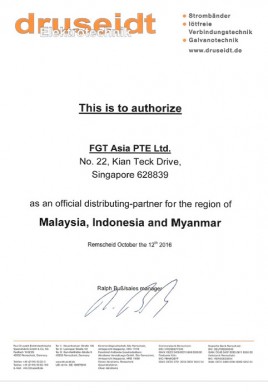Awards / certificates
ISO





Railway
Flammeability : EN 45542-2
IP Salty Strength EN 62444
Railway-related standards
When considering the rail compatibility of components, the technical compliance with the requirements of many different standards is what is meant. In Europe, these are brought together in the over all standard, EN 50 155. Even Though this is a European standard, this standard is also often used outside Europe in tender processes.
As far as connectors are concerned, the standard itself, however, is not fully comprehensive. Due to this, improvements were made and EN 50467 "Railway applications - Vehicles - Electrical connectors, requirements and test procedures" was created and published in 2012. This is now the applicable standard. In relation to termination techniques, EN 50467 encompasses many more variants (IDC technique, cage clamp terminal, press-in technology) than EN 50 155, which applies for electronic systems in rail vehicles. Although EN 50 155 refers to test procedures, in relation to electromagnetic compatibility (EMC), environment (cold,humidity,warmth), protective classes, shock and vibration, EN 50461 has much more detail in the form of the differences for the test requirements on connectors depending on their installation location.
- Production Against incorrect Mating - EN 60 512
- Production Against electric shock - EN 61984:2001;EN 50 153
- Earthing devices
- Locking
- Ip degree of protection - EN 60 529
- Service life
- Shock and vibration - EN 61 373
- Corrosion protection
- Behaviour in a fire
- Shock and vibration: EN 61 373, category 1 b by default, Category 2 on request
- Environmental testing: IEC 60 068
- Electromagnetic compatibility (EMC): EN 50 121, EN 61000-4-4
Automation
Profibus, Profinet, Ethernet/IP, CC-link
Ship building
Germanischer Lloyd
Oil and Gas
Against oil, acidic and alkaline
Others
UL, RoHS
Certificate List :
Showing 1 to 1 of 1 entries



